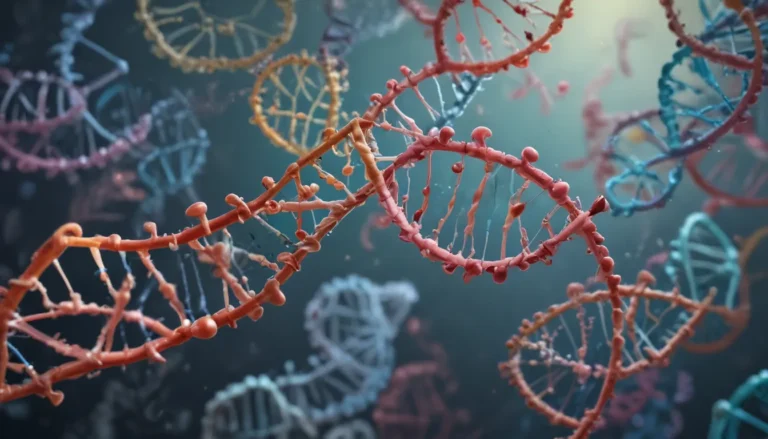A Note About Images: The images used in our articles are for illustration purposes only and may not exactly match the content. They are meant to engage readers, but the text should be relied upon for accurate information.
When it comes to understanding the wondrous complexities of biology, gamma diversity emerges as a key concept that unveils the richness of species within a given region or ecosystem. As we delve into the realm of gamma diversity, we uncover a tapestry of intricate connections and insights that illuminate the diversity of life on Earth.
Unveiling the Essence of Gamma Diversity
Gamma diversity stands as a measure of the total species diversity encompassed within a specific geographic area. It provides a holistic view of the myriad species present, shedding light on the dynamic interplay between organisms and their environments.
The Genesis of Gamma Diversity
The visionary concept of gamma diversity was initially introduced by Danish ecologist, Ole Hampe. In 1994, Hampe conceptualized gamma diversity as a means to unravel the distribution and richness of species in diverse ecosystems, laying the foundation for further exploration in the field of biodiversity.
The Significance of Gamma Diversity in Conservation
Gamma diversity serves as a pivotal tool in assessing the conservation value of an area. By quantifying the overall species richness, it enables conservationists to identify priority areas for protection and restoration, fostering the preservation of diverse ecosystems.
Factors Influencing Gamma Diversity
Habitat heterogeneity and climate dynamics play instrumental roles in shaping the gamma diversity of an area. The diversity of habitats and environmental conditions within a region intricately influence the richness and distribution of species, highlighting the interconnectedness of ecosystems.
Ecological Stability and Gamma Diversity
Regions boasting high gamma diversity often exhibit enhanced ecological stability. A diverse array of species fosters resilience within ecosystems, enabling them to withstand disturbances and environmental changes with greater efficiency.
The Dynamics of Gamma Diversity
Over time, gamma diversity within an area can fluctuate in response to various factors such as habitat destruction, climate change, and invasive species introductions. These dynamics underscore the ever-evolving nature of biodiversity and the need for vigilant conservation efforts.
Exploring the Nuances of Gamma Diversity
The Multifaceted Measurement of Gamma Diversity
Gamma diversity can be assessed at different spatial scales, ranging from local ecosystems to global regions. This comprehensive approach offers insights into the patterns and drivers of biodiversity across diverse landscapes.
Keystone Species and Gamma Diversity
The presence of keystone species plays a pivotal role in maintaining the delicate balance of ecosystems. Their loss can trigger cascading effects, leading to a decline in overall species richness and disrupting ecological processes essential for ecosystem functioning.
Climate Change and Its Impact on Gamma Diversity
The looming threat of climate change poses significant challenges to gamma diversity. As global temperatures rise, shifts in species distributions can profoundly impact the composition and diversity of ecosystems, underscoring the urgent need for mitigation strategies.
Human Activities and Gamma Diversity
Human-induced factors such as land use change and habitat fragmentation can detrimentally affect gamma diversity. Activities like deforestation, urbanization, and agriculture can fragment habitats, isolating species populations and diminishing overall biodiversity.
Conservation Implications of Gamma Diversity
Gamma diversity offers invaluable insights for conservation planning, guiding efforts to protect and restore biodiversity-rich regions. By understanding species distribution patterns, conservationists can prioritize conservation actions to safeguard vulnerable ecosystems.
Unlocking the Mysteries of Gamma Diversity
Speciation and Extinction in Gamma Diversity
Historical factors such as past speciation events and extinctions play a pivotal role in shaping the current patterns of gamma diversity. The evolutionary history of a region influences the richness and distribution of species, shaping ecosystem dynamics.
Invasive Species and Gamma Diversity
The introduction of non-native species through human-mediated activities can disrupt gamma diversity by outcompeting native species. Invasive species have the potential to diminish species richness and alter the composition of ecosystems, posing a threat to biodiversity.
Comprehensive Species Inventories for Gamma Diversity Estimation
Accurate quantification of gamma diversity necessitates thorough species inventories conducted by scientists. Comprehensive surveys and documentation of all species within a region are essential for gaining a nuanced understanding of biodiversity patterns.
Embracing the Wonders of Gamma Diversity
In conclusion, gamma diversity stands as a captivating and essential concept in the realm of biology, offering profound insights into the intricacies of species diversity across ecosystems. The 20 extraordinary facts about gamma diversity highlighted in this article underscore its importance in ecosystem functioning, conservation planning, and biodiversity management.
FAQs: Navigating the Realm of Gamma Diversity
- What is gamma diversity?
-
Gamma diversity refers to the overall diversity of species across different habitats within a region, representing the total number of species present.
-
How is gamma diversity different from alpha and beta diversity?
-
Alpha diversity measures species diversity within a specific habitat, while beta diversity evaluates species turnover between habitats. Gamma diversity integrates both measures to provide a comprehensive assessment of species diversity in a region.
-
Why is gamma diversity important?
-
Gamma diversity is essential for understanding overall biodiversity, identifying conservation priorities, and gaining insights into ecosystem functioning and human impacts on biodiversity.
-
How can gamma diversity be measured?
-
Various methods such as quadrat sampling, transect surveys, and DNA sequencing are employed to measure gamma diversity, enabling scientists to quantify the total number of species in a given area.
-
Can gamma diversity change over time?
-
Yes, gamma diversity can fluctuate over time due to natural factors like climate change and human activities such as habitat destruction. Monitoring changes in gamma diversity is crucial for managing biodiversity loss.
-
Is there a global pattern of gamma diversity?
-
Yes, a global pattern of gamma diversity exists, with higher diversity often found in tropical regions compared to temperate or polar regions. Local factors like climate, geology, and habitat availability also influence gamma diversity.
-
What threats does gamma diversity face?
-
Gamma diversity faces threats such as habitat loss, pollution, climate change, overexploitation, and invasive species spread. Conservation efforts are essential to safeguard and preserve gamma diversity.
-
How can we conserve and protect gamma diversity?
- Effective conservation strategies involve establishing protected areas, promoting sustainable land use practices, reducing pollution, and raising awareness about the significance of biodiversity conservation.
Amidst the intricate tapestry of biodiversity lies the captivating realm of gamma diversity, offering unique perspectives on the richness and interconnectedness of life on our planet. Delve into the wonders of this concept, embrace the multifaceted relationships between species and ecosystems, and embark on a journey towards safeguarding the diverse wonders of our natural world.





